The Bike Shed: SRAM shifts to cables with mechanical Transmission

Since its 2023 release, SRAM’s wireless Transmission (T-Type) mountain bike drivetrain has been a huge success. Transmission’s seamless shifting (especially under load) and direct-mount derailleur tech, combined with robust construction, has resulted in its various levels – from GX to XO through to XX SL – proving so popular that some bike brands have started producing frames with no allowance for cable-based drivetrains. There are, however, still plenty of mountain bikers who prefer the ‘analogue’ tech of cable-based shifting, and who have also been holding out to see if SRAM applied its Transmission tech to a mechanical drivetrain. Enter the all-new SRAM mechanical Transmission, which is available in two variants – Eagle 90 and Eagle 70 (expect 70 to be mostly an OE-spec for bike brands) – answers those riders’ question, with a complete Eagle 90 groupset costing $1150. (There is also an eMTB based Eagle 90, RRP $1015.)
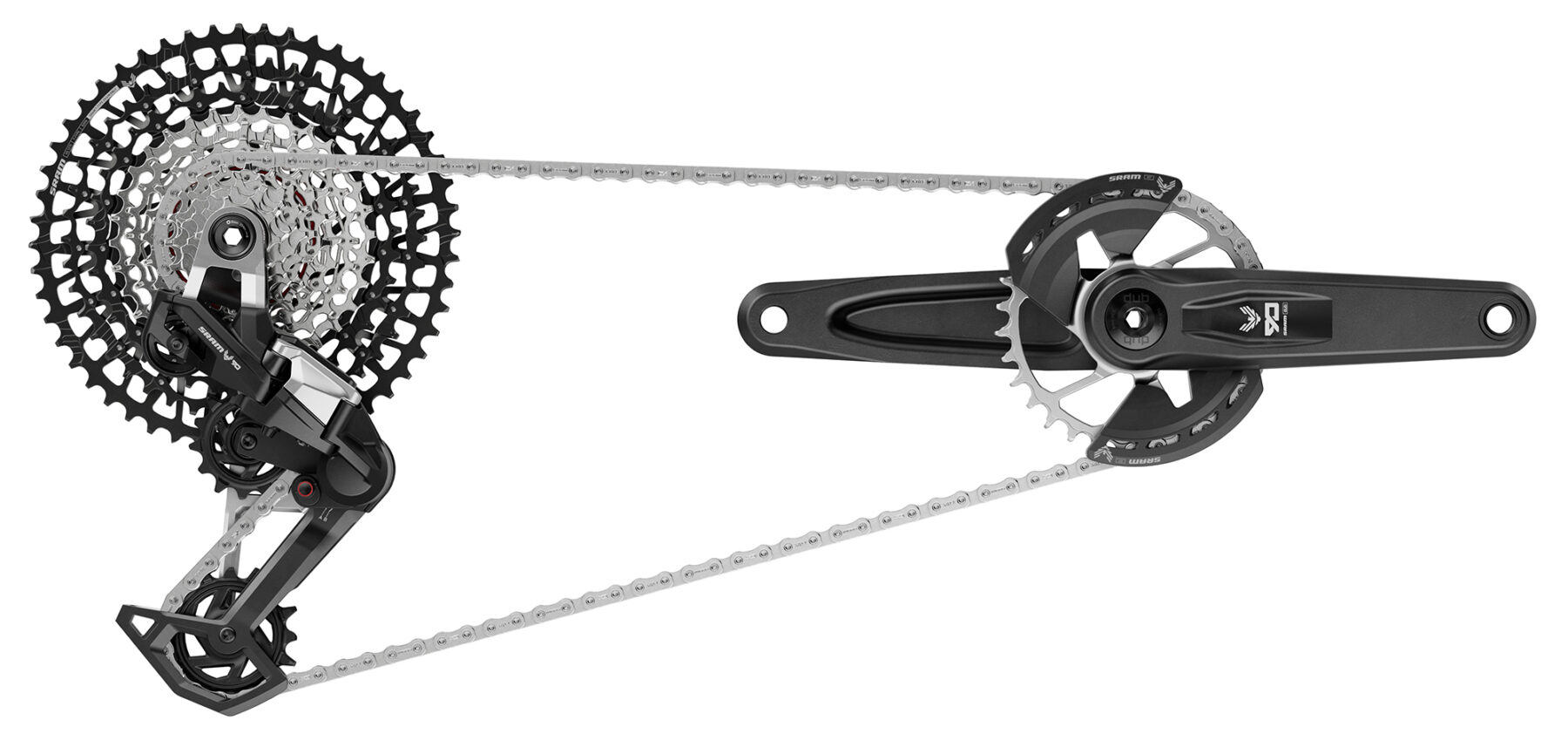
Our crusty and cantankerous group of MTB mechanical-only Luddites at Aus Geo ADVENTURE are suitably excited, and for good reason…
Whatchya get
Fast-forward roughly two years from the launch of wireless Transmission and SRAM’s Eagle 90 has brought that same efficiency, ease of setup, and durability to cable-based shifting, along with a derailleur that the brand claims is the ‘most rebuildable’ yet.
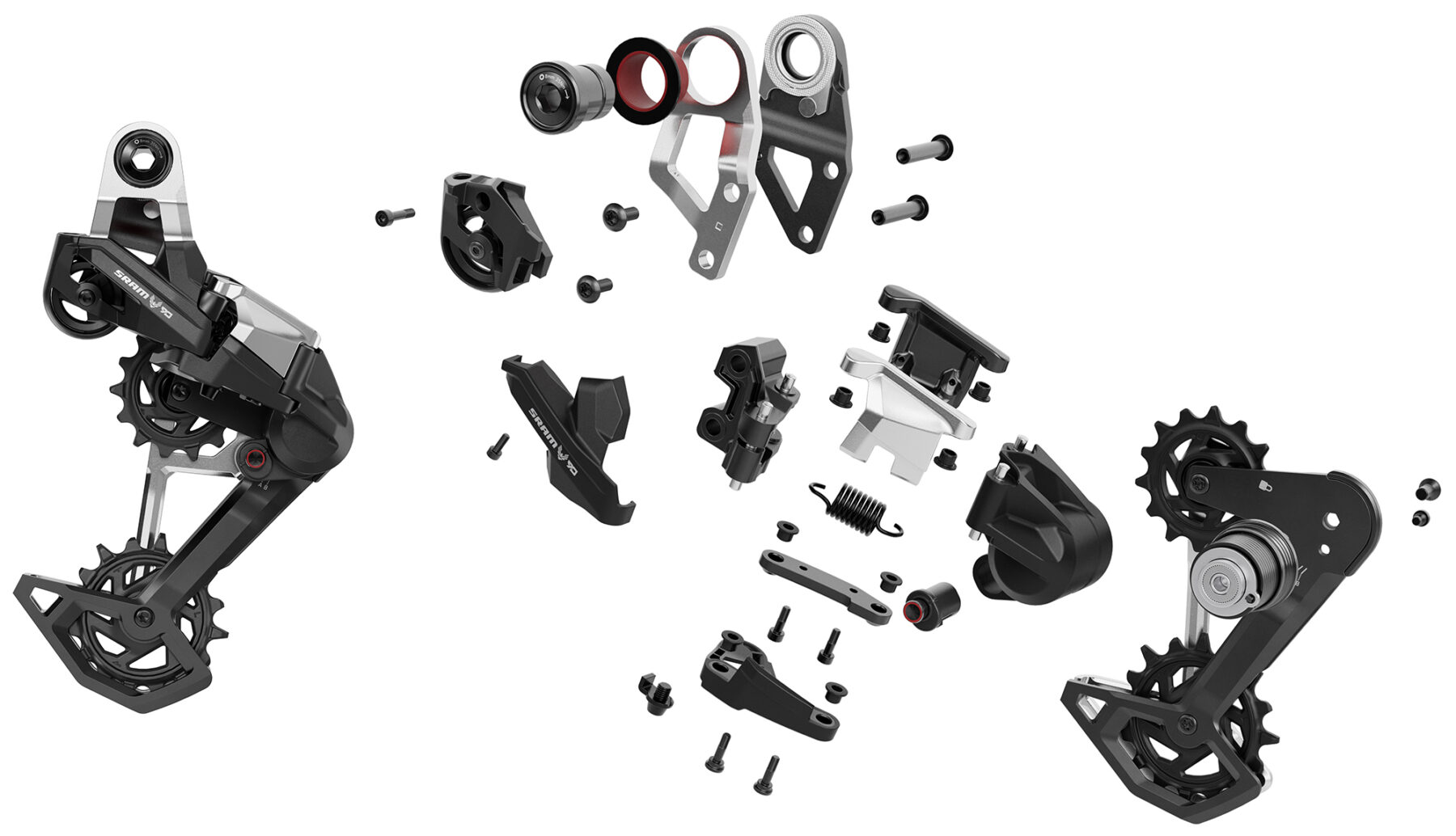
The installation of an Eagle 90 cable drivetrain is (nearly) as quick and easy as its powered equivalent; after attaching the Eagle 90 derailleur to the UDH/frame, you simply tighten it all up (there’s even an app to run you through these steps) and run the cable through from shifter to derailleur. There’s no faffing around with limit screws or the B-tension screw, unlike other brands’ setup procedures.
Highlights of mechanical Transmission
The standout of this new mechanical Eagle 90 drivetrain must be the derailleur itself; now close to fully rebuildable, you can replace the cage, skid plates, B-knuckle, pulley, and parallelogram links if/when these components are either damaged or wear out. Yep, that’s impressive.
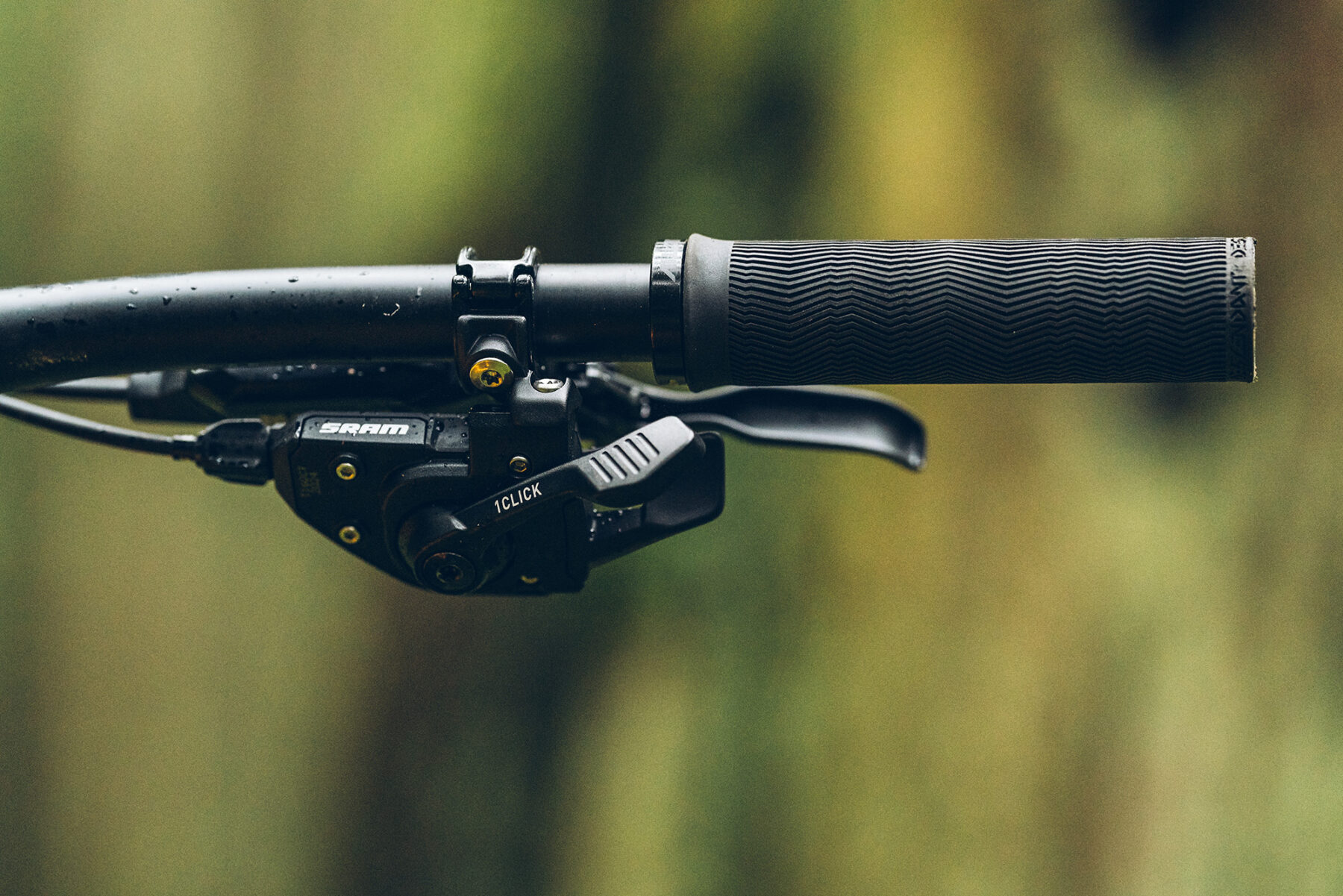
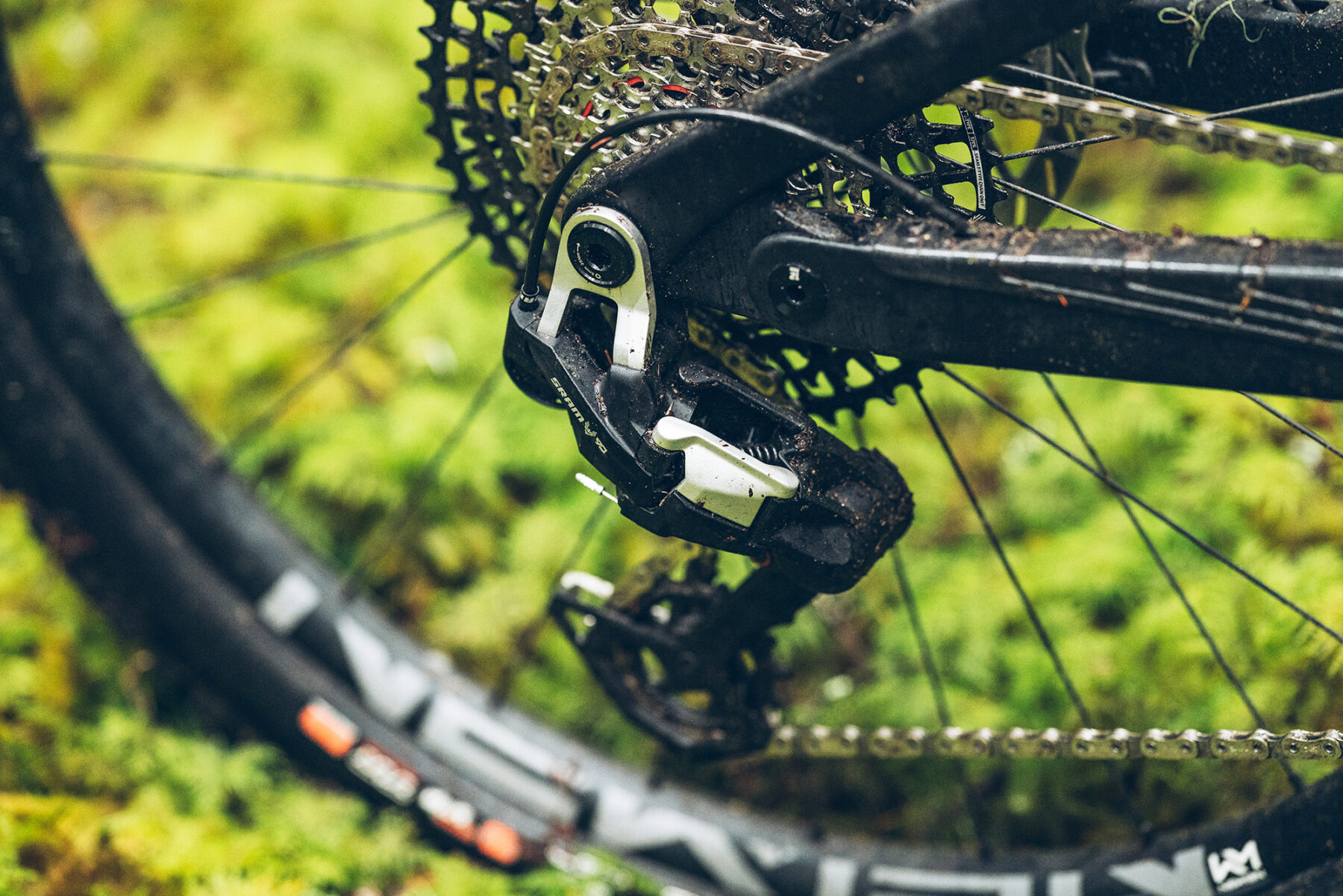
The derailleur is a hefty unit, at 395g, and when combined with the new shifter (note: shifting is limited to two up/one down at once only), beefy cranks, with optional bashguards (note that you do get a strong steel – rather than aluminium – direct-mount chainring combined with forged aluminium crank arms), 10-52T cassette (featuring SRAM’s X-Sync tooth profile and 44 shift points, designed around a 55mm chainline, and now with larger 38 and 44-teeth cogs preceding the 52-tooth granny ring), and the GX Flattop chain, the complete drivetrain sits at around 2085g (give or take, and depending on length of cranks; these range from 155mm to 175mm).
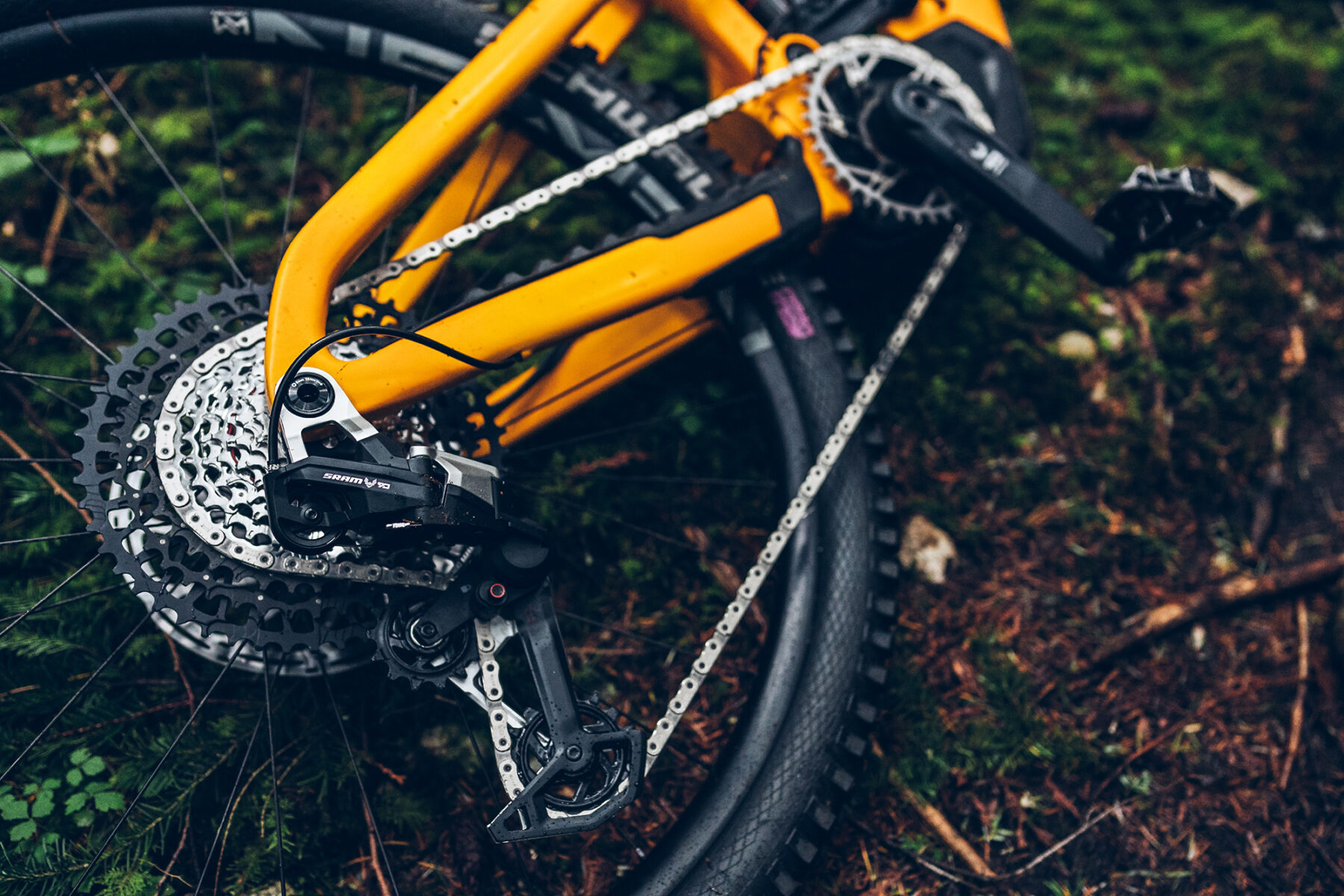
That’s not light, but for that weight you get shifting that is on par with its powered counterpart, for close to half the price (and less stress around charging batteries). For the weight-weenies, it’s worth noting you can mix-and-match other Transmission components, such as cranks and cassette, to drop weight from the drivetrain if you so desire.
What we reckon
Going by specs only at this stage, we still think SRAM is on a winner. Its UDH is now ubiquitous across MTB brands and adding a mechanical version of its hugely popular Transmission – and a version that is a full new design – is nigh on the perfect world for a lot of riders who want something that is durable and efficient but had baulked at the asking price of wireless shifting, or were just not keen on being reliant on remembering to recharge batteries.
See SRAM for more info on mechanical Transmission.

